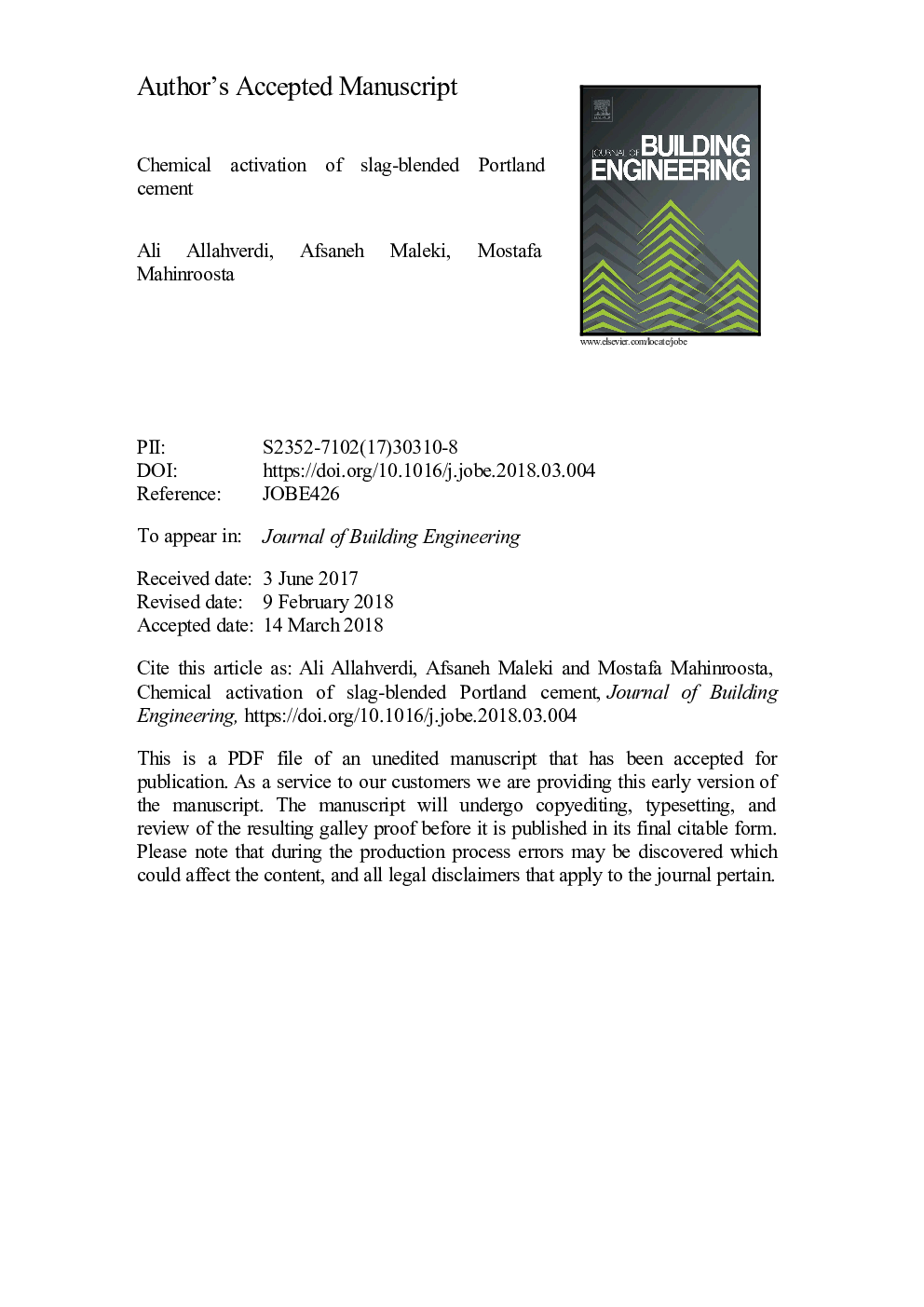| Article ID | Journal | Published Year | Pages | File Type |
|---|---|---|---|---|
| 6749847 | Journal of Building Engineering | 2018 | 21 Pages |
Abstract
Chemical activation as one of the most popular methods of activation has been considered for improving hydraulic properties of slags. This work presents chemical activation of blast-furnace slag-blended Portland cement. For this purpose, a number of different chemical activators and two different quality improvers including Triisopropanolamine (TIPA) and Triethanolamine (TEA) were utilized. At first, initial mixes were prepared using different proportions of slag, Portland cement, and insoluble sulfate-based chemical activator. The optimum mix was then selected based on 28- and 60-day compressive strength results. The results indicated that the optimum mix consisted of 48% Portland cement, 43% slag and 9% insoluble chemical activator. In the next stage, various dosages of TIPA and TEA were added to the optimum mix for improving the strength behavior. Based on the results, the addition of 0.04% TEA leads to 8% enhancement in both 28- and 60-day compressive strengths. To induce more improvement in compressive strengths, chlorine soluble chemical activators were incorporated in the mixes. The results showed that, chlorine activators alone or in combination with TEA as quality improver could induce no more improvement in compressive strength. However, the obtained results revealed a set accelerating behavior for chlorine soluble chemical activators. Studies by scanning electron microscopy coupled with energy dispersive X-ray spectroscopy analysis and X-ray diffractometry on 60-day cured hardened paste of the activated mixture have revealed that the microstructure is composed of an amorphous matrix in which plate-like Portlandite crystals are embedded. Application of Fourier transform infrared spectroscopy has confirmed the presence of calcium-silicate hydrates as the main binding compound of the material.
Related Topics
Physical Sciences and Engineering
Engineering
Civil and Structural Engineering
Authors
Ali Allahverdi, Afsaneh Maleki, Mostafa Mahinroosta,
